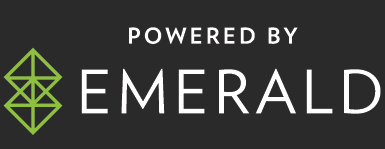By Matt Wasserlauf, Co-Founder and CEO of Blockboard
25 years ago, I was hired by CBS.com to sell banner ads across their fledgling group of websites. “Tonight at 9:00 pm on CBS, Touched by an Angel!” It would say. Now, who wouldn’t want to buy a banner ad on that??
The digital advertising business has changed so much in the past 25 years, from its early days of banner ads and search to today’s $50 billion Connected TV (“CTV”) marketplace.
The biggest change in the digital advertising industry, though, is automation, otherwise known in the business as “programmatic advertising.” Programmatic advertising has turned the three-martini lunch into a cold and human-less business. The old days of handshakes have been replaced with “hands-on keyboards.” Presentations that used to be made in the board room are now made on Zoom to a team of face-off, muted black boxes.
We also have $20,000,000,000 of ad fraud. Annually. (Yes, that is the correct number of zeros.)
Fifteen years ago, the promise of programmatic advertising led by companies such as TradeDesk and TubeMogel (now owned by Adobe) did much to scale the business, but it also scaled the amount of ad fraud and waste. Digital advertising now ranks #2 among leading fraud rings behind illicit drugs and ahead of illicit guns. The industry and its stakeholders don’t appear to be all that alarmed at this current state of affairs. The Association of National Advertisers (“ANA”) published its study, ANA Programmatic Media Supply Chain Transparency Study and the best way I can describe the reaction to the ANA report has been a “muted response.”
What all of this has brought us to is a clear inflection point for our industry. What programmatic advertising has done to the advertising business is swing a very creative and high-touch business toward the opposite extreme. The industry’s inflection point will be a period where the business works to moderate on the spectrum and find that middle ground where digital advertising can thrive.
I see two powerful trends that will drive digital advertising forward: help it find its equilibrium and catapult the industry into the future. The first is a technological rebirth of the business, and the second is creative.
By technological rebirth, I mean the digital advertising industry needs to emerge from the “black box” that it currently operates in and embrace the promise of decentralization and transparency – otherwise known as Web3. The technology most often associated with Web3 is blockchain. Whatever technology emerges from Web3, the industry must find new ways of auditing and policing itself. The government’s anti-trust proceedings against Google are certainly one method of technological rebirth. By breaking up Google, there may be ways to restructure technology to better audit its methods, but it will likely take a private path as well. There is a great deal of work to be done here, and until this happens, digital advertising will be hampered by its waste issues.
The second trend that will propel digital advertising forward is creative. For the past 50 years, the advertising industry celebrated its creative chops as its soul. One only has to watch an episode of Mad Men to see how the creatives in the industry loomed large in the business. For many, creative was the soul of the advertising and television industries, and to this day, many still consider the Super Bowl spot to be the pinnacle of advertising.
For the digital advertising industry, creativity has become the forgotten piece of the puzzle. For the past 20 years, it’s been the routine to air creative made for linear television and repurposed to run in streaming video. I recall a Chipotle commercial that I aired promoting their downloadable app built for linear television. The agency’s KPI (“Key Performance Index”) was in-store sales, not downloading the app that was suggested in the spot. While we met both KPIs for the campaign, the creative wasn’t built for the new streaming audience nor for its intended KPI. A wasted opportunity, in my opinion, as there is so much incredible upside for marketers if they embrace this new digital opportunity and create spots specifically for this new and booming demographic.
While I’ve worked in the digital advertising industry for the past 25 years, it was closer to 30 years ago when I remember going to Burbank, California, where my bosses at Warner Bros. showed me the first digital video I would ever see. They digitized a Friends episode and clicked on Jennifer Anniston’s sweater only to launch a website to buy that sweater. My head popped, and that was when I promised myself that I would pursue a career in digital advertising.
Today, we sit at a new inflection point for digital. If our industry nails this, we are positioned to reach our incredible potential.
That’s what 25 years in this business has taught me, and I’ve never been more excited than I am today.
About the Author
Matt Wasserlauf is the Co-Founder and CEO of Blockboard, a performance CTV ad platform that utilizes Blockchain technology to ensure total transparency, verification, and trust.








